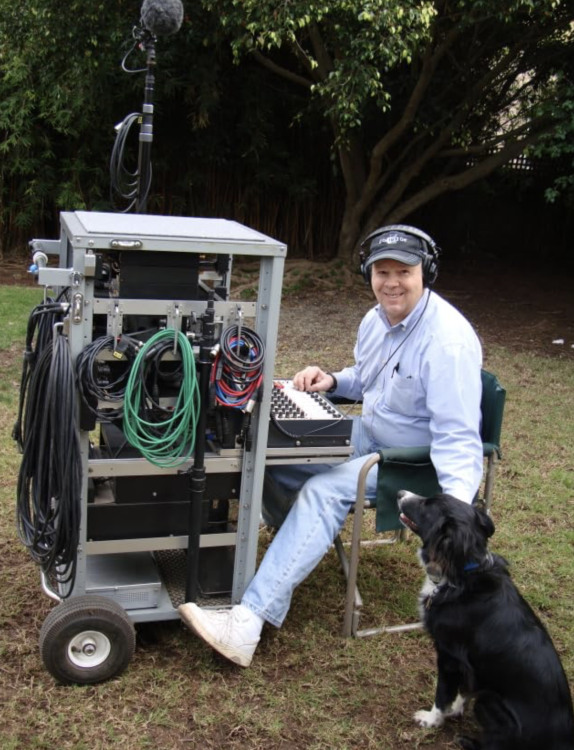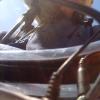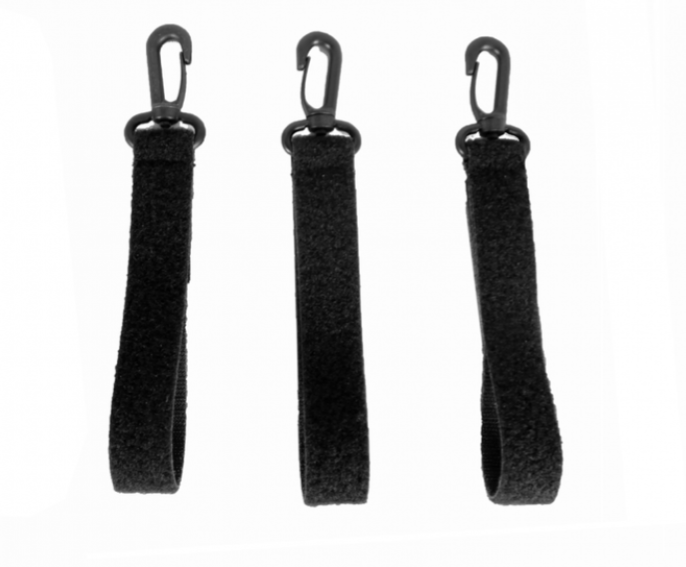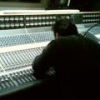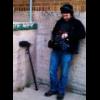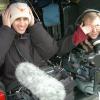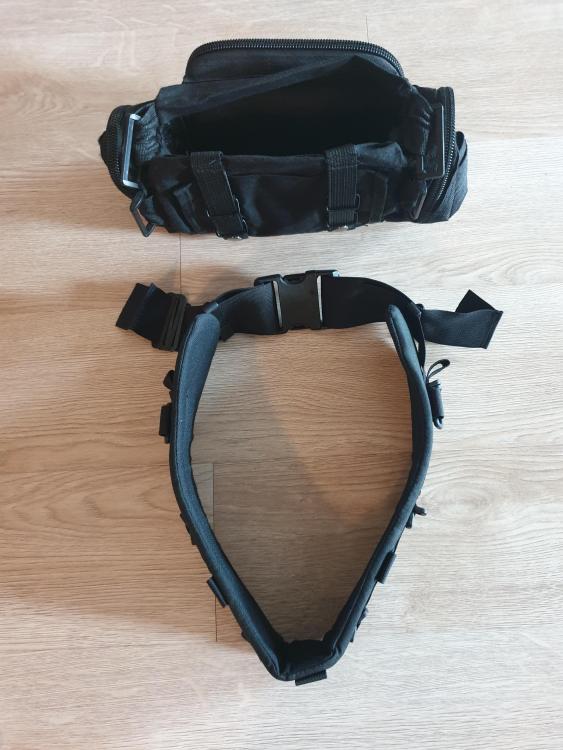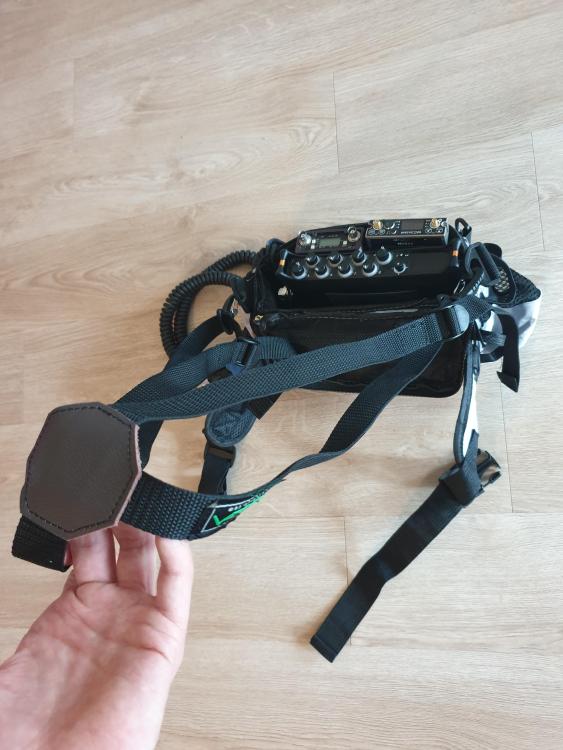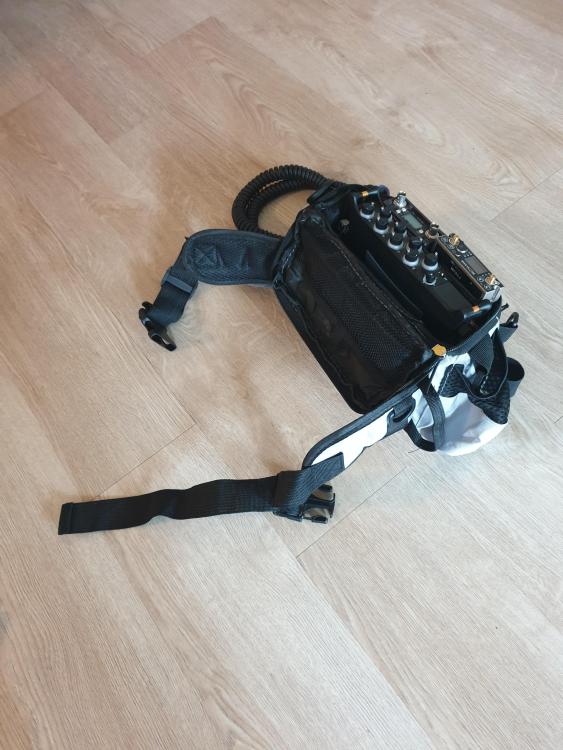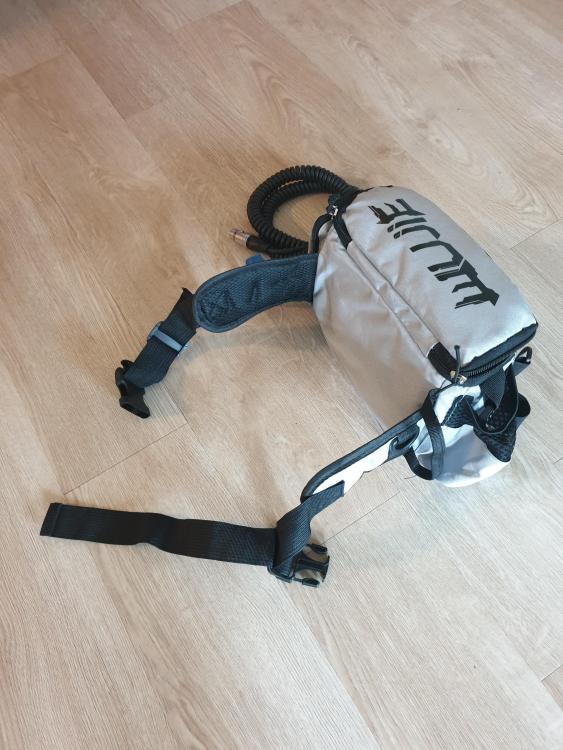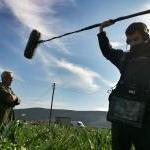Leaderboard
Popular Content
Showing most liked content since 04/15/2024 in all areas
-
I wrote an article with some (hopefully) helpful tipps and tricks https://schoeps.de/en/knowledge/knowledge-base/recording-techniques/miking-a-car8 likes
-
I haven't managed to thank everyone personally but the last few days have seen an amazing amount of support donations from our members. Maybe my birthday, April 18th, triggered this, I don't know, but it is so appreciated! We have such a great group of sound people here who participate regularly on site and so many of our veteran members have generously offered so much good advice and help to many of our newer members. It is amazing that we can keep this all going considering how much "competition" there is from so many social media websites. I am aware that the legacy forum format is showing its age a bit but it seems to be still working quite well. So pleased that there is room in your lives for JWSOUNDGRIOUP. Thank you, again, from the bottom of my heart for all the generous support donations.5 likes
-
I was in the middle of a 7-input music recording yesterday and I looked at my, what? 16-year old, 788T and wondered to myself. How did a fledgling company like Sound Devices manage to put into production such an unbelievable piece of kit? SMH. Goes in the Hall of Fame along with my 1989 Volvo 245 wagon; 485,000 miles on the clock. Wow! D.4 likes
-
I'm almost done with a windows version of the app that controls a single 788 via usb. Multiple unit control over USB is limited to basic CLink broadcast commands like roll and cut, but I currently have a way I could hook up the 788's CLink port to a router with a $50 RS232 to ethernet/wifi adapter so it could be discoverable by an iPad/Android Tablet and you could control multiple linked units with it. I don't currently have a Mac to write an iPad app on though. Once the Windows usb app is done, I can post it here as a basic test app for funtionality/bugs before writing the actual iOS/Android versions cause those would take a bit longer since I'd have to learn their platforms a bit more.3 likes
-
3 likes
-
I think he means how the Easyrig has rigid hooks that hold the bag, so it is easy to take the bag on and off instead of unclipping 6 carabiners. I have always wanted something like this as well. I have both the Orca and Ktek waist belt and I find both of them super uncomfortable. Even the smallest bag, I found the mixer sat too low and kind of prevented me from being able to walk properly.3 likes
-
Hey Everyone, Here is a super rough version of Goose, my 788T control software. Please keep in mind this is VERY ROUGH and I'm posting it to get a feel of what sort of glitches/bugs I need to work out. But feel free to download it and try it. I'm curious to hear any problems/crashes you might have so I can fix them. SCREENSHOT GALLERY: https://imgur.com/a/MdfATSF Here is a list of some of the stuff you can do with it: FEATURES - Fully control the 788T's transport REC/STOP/PLAY - Edit scene/take info easily for the last recorded and next take - One-button "lettering up" to the next scene letter (haven't implemented a numerical European system yet) - One-button false take - "Track View" - view track meters, edit track labels, arm/disarm tracks - "Output View" - view output meters, adjust output attenuation, set output routing sources - "Input View" - view input meters, adjust input settings such as source, phantom power, phase flip, pan, rolloff, delay, and (soon) EQ - View and edit file metadata in a take list that shows previously recorded takes - Unit temperature readout to see how spicy she's getting REQUIRMENTS: Ensure you are using a USB 2.0 or greater cable to connect your 788 to your Windows PC(the plastic inside the connector should be black or blue, NOT WHITE) You will also need to make sure you have the latest Microsoft .NET Desktop Runtime installed (8.0.4 as of this post). You can get it here: https://dotnet.microsoft.com/en-us/download/dotnet/8.0 INSTRUCTIONS: 1. To use the software, connect your 788T to your windows computer via its USB port. 2. On the 788T, set your connection mode to "Wave Agent" 3. Open the windows Device Manager and look under Ports (COM/LPT). You should see your 788t listed with its COM port. Mine comes up as "Silicon Labs CP210X USB to UART Bridge." I honestly don't know if SD ever changed from using the CP210X, so yours may look different. It should be fairly obvious. You can double check by unplugging and replugging it into your PC and see what comes up. Take note of the COM port listed with it. 4. Start the software, then select the COM port with your 788 on it and click CONNECT. 5. To Disconnect/Exit, just click the power button next to the Play button. The controls are pretty self explanatory. Click the view button with the eye on it to change between track/output/input views. FUTURE UPDATES: There is a lot I want to do that I haven't done yet. Here's a list of what I plan to add in the future: Remote control of multiple 7 Series recorders via a USB to C. Link adapter Better visual feedback to know when the software is busy and when its ready for user input. I got pretty lazy about this and will try to make it clearer. Permanent user settings that hold after each launch like remembering COM port, hiding welcome screen, temperature C/F, Meter Type, Date/Time, etc. Headphone monitor mode list customization: I ideally want an easy to understand visual list where you could easily customize the available headphone monitor modes, favorite mode, etc. I personally want a toggle button that makes it easy to mute/unmute the output I use for public Comteks. Once muted, it would disable the record button so you can't record until you unmute the Comtek feed. This way, I can talk shit with my boom op and not forget to unmute afterwards (we've all been there). Keyboard macro's: I haven't looked into it too much yet, but it looks like there might be a way to send ascii keycodes through C. Link commands. If that were the case, you could theoretically automate different operations on the 788 that would normally be achieved through physical button/keyboard input. KNOWN ISSUES: Depending on the DPI and UI scaling of your display, the GUI might get all wonky. I'm planning on completely redoing it and making it DPI independent, but for now if it looks all messed up, try playing with the UI scaling in windows. 150% should do it. Meter colors are completely arbitrary at the moment. Hoping to make them accurate in next update. Meter refresh rate also leaves a lot to be desired. Not sure I can improve that given how C. Link works. Multiple units not supported yet. Connecting multiple units via C. Link can produce unexpected behavior/crashes. Some 788's seem to have trouble making a successful connection at first. I had to manually change the baud rate on one of mine in device manager to get it to connect. Now it connects no problem. If it looks like it's starting to connect then crashing, try right clicking the COM port in Device Manager and manually set the baud rate to 115200. And make sure you're using at least a USB 2.0 cable. USB 1 cables will not work. When multiple 788's are connected via C. Link cable, set the slave machine's connection mode to Wave Agent. Having it set to anything else causes a crash because the master machine won't return a correct timecode value. I'm trying to sort this out. That's pretty much it. Please keep in mind, this is SUPER ROUGH, will probably be buggy, and has only ever been tested on my 788's until now. I would appreciate any feedback you may have and welcome bug reporting in this thread so I can update it. Thanks! Goose v0.1.zip2 likes
-
...and to record the thud of the stand falling down from a wave or a gale.2 likes
-
I think this comes down to available bandwidth and your own skillset to manage said bandwidth, especially in crowded areas and the troubleshooting, than it does the technology. Sure, having more options and spread will help, but a master in current UHF/VHF will outperform a novice with the newest equipment. Old lectros are going for some of the lowest I've seen...ever. I'll continue to pick up what I need and slowly upgrade/swap my old-old for old Lectro.2 likes
-
30 talent is a lot! Maybe a more experienced reality mixer will chime in with a better idea, but my starting point (really, the only gear I know can handle it) would be Zaxcom wireless + URX50 IFBs. You can program frequency presets for all the wireless channels, and producers can choose the presets they want to listen in on. If you name the transmitters appropriately, they'll be able to identify which preset is which. You'll also probably want a GUI Bridge and some form of Zaxnet for remote configuration ... 30 talent + IFBs is way more than you want to manage one-by-one. I suspect it may be normal to hire a second mixer to do manage specific producer mixes (necessary if the producers need to listen to more than one channel at the same time), but you could also potentially do it with submixes and an additional transmitter at your cart for each submix. It sounds like a huge job! I hope you find the help you need.2 likes
-
2 likes
-
To my knowledge, no one makes a receiver capable of deciphering a digital signal from multiple brand transmitters. Unlike analog companding, every manufacturer has their own way of transmitting/receiving Ones and Zeros that makes them incompatible with each other. As others have suggested, your easiest solution would be to procure additional EW-DP receivers that can all receive signal from a common Sennheiser digital transmitter. If that form factor does not work for you, you’ll unfortunately have to resort to a separate transmitter/receiver system to dedicate for IEMs, or scrap the EW-DPs entirely and change your whole setup to something like Sennheiser analog (G4tx + G4rx/IEMs), Wisycom analog (MTP + MPRs), Lectro analog (various tx/rx combos + R1a), Lectro digital (DCHT + DCHR/M2Rs), or Zaxcom digital (CL + RX200/URXs).2 likes
-
... you get a second EW DP to receive the signal you are already sending to the camera. A good and proper Cam Hops Kit should have a TX with Multiple RX to be used for multiple cameras, or in your case, as listening devices (IEM) for producers. Cheers, Tim2 likes
-
Bizarre. I have had my 664 since they were first introduced. Really a bullet proof machine. The only problem I have ever had with my 664 is, after many years of use, a circuit board ribbon cable worked loose, probably due to cluncking my mixer bag onto tables thousands of times. You have jiggled switches, cables and connectors in an effort to duplicate the problem. That is good. Now questions. 1) were you operating on an AC adapter or battery? Is it possible either has an overload or under voltage circuit that could have suddenly reset and momentarily cut power? 2) Did anything else in your setup lose power at this time? 3) were you running power direct to the mixer or through a BDS? BDS units have short circuit protection. Maybe it momentarily reset.2 likes
-
2 likes
-
So I got a few of the Storacell magnetic caddies. I like em! They make two different kinds, one with embedded magnets that you can’t remove and another where all the magnets are in a removable strip so you can pull off the strip and all the batteries will just fall out. I got one of each I would recommend the embedded type. They work exactly the same as the original style battery clip caddies but no chance of damaging the wrapper. Expensive but nice for throwing in a small bag or pouch. I also have a few of the MTM ammo cases recommended here and those are also great for a large amount of batteries but for 4-12 it’s hard to beat the plastic clips. There’s also a flip top Plano box that’s deep and has three sections perfectly sized for AA and 9 volts that I would recommend. We use one on the top of our follow cart. One section gets loaded with AA lithiums, one section AA alkaline abs the third gets loaded up with charged iPower 9V. Pretty sure it’s this one. Almost like it’s made for AA & 9V. https://www.planooutdoors.com/prolatch-spinnerbait-organizer-15927462 likes
-
No wonder it was never used haha! I can't think of a use for that. I used the Ktek today and it was great! I was able to adjust to basically all the weight is on my waist, it's great. It is pretty hard to get on and off, but I don't see a way to make it better while enjoying the 6-point system. This thing is pretty great, so far. We'll see if I wake up tomorrow with anything sore.2 likes
-
I disagree heartily. Not to say that digital mics don't have a place, but you are writing as though the digital parts of the signal never fail. You aren't making the system less complex. You are simply moving the complexity into the microphones and requiring a whole bunch of functionality to be duplicated in every microphone instead of implementing it once in the recorder. That has pros and cons, and your post only really lists the pros. Pros: Shorter analogue path means less susceptibility to analogue distortions. Duplication of input signal circuitry provides redundancy: If it fails, only one microphone has failed, not the recorder. Less analogue circuitry in the recorder means less weight and power consumption in the recorder. Cons: Removes compatibility with analogue microphones and other devices and / or requires outboard pre-amps and A/D converters for every analogue device I need. Increases weight and power consumption in every microphone (meaning: a heavier boom and way less battery life for the boom Tx). Makes troubleshooting slower and more difficult because now there are more places where settings can be misconfigured, and more points of failure in the microphone. Using a wireless Tx for the boom introduces all the reliability issues of a wireless transmitter ... sure it's digital, but that doesn't avoid interference, drop-outs and battery issues. Longer digital path means more ways for digital transmission to go wrong. Practically speaking your approach locks you into a single microphone vendor. Schoeps is great, but it's not the correct choice in every situation. I want to be able to use specialized instrument mics, hydrophones, geophones, exotic pre-amps, and all the $100K+ of analogue accessories in my existing sound kit. I want to know I can easily patch into a house sound system, or plug in a microphone that someone has handed me as their "favourite mic". The CMD42 requires an order of magnitude more power than a phantom microphone. That means worse battery management for boom transmitters, or a significant increase in recorder power consumption if hardwired. I get less than 2 hours of runtime on my TRX745 when powering my AES42 SuperCMIT. That can work for a dramatic show where I have a boom op to baby-sit it, but it wouldn't work for long interviews. Your approach doesn't reduce power consumption for the whole system, it just moves it around. In my opinion, focussing on gear and signal-chain as a path to better audio only goes so far. In day-to-day operation, simplicity, resistance to user error, and ease-of-workflow have a greater effect on audio quality than keeping the analogue path as short as possible. The change you are suggesting trades workflow advantages for signal-chain advantages that are mostly minor or theoretical. These are the workflow disadvantages that I see: Eliminating analogue inputs hugely restricts my workflow by limiting which tools I can use. Access to the right tool for the situation is hugely important for keeping workflows simple. Pushing input processing into the microphone means I no longer have instant access to those settings in the recorder. I can't instantly see what settings are enabled, and to change them, I have to pull out a phone and get physically close to the mic (because settings are changed by dweedle tones). Yes, there are circumstances where the input processing really does need to be very early in the chain, but 95% of the time it doesn't matter and its easier, quicker, and more reliable to make the change at the recorder. Using a boom transmitter means another devices to manage batteries for, and the high power consumption of the CMD42 means I need to track this fairly closely. I can't just change batteries once a day at lunch. I can see a place for a recorder with all-digital inputs for simple jobs (say, an interview kit) where I could bring a single-purpose kit and know that the job will fit within the confines of that single purpose. But it couldn't be my only recorder ... I need a recorder with analogue inputs for a general purpose kit because of the flexibility it gives me. Maybe that will change in the future. If enough other manufacturers adopt digital, I'd feel less need to rely on analogue gear. If the recorder (in conjunction with the boom Tx) implements the AES control protocols well enough that I don't need to whip out my phone to adjust settings in the microphone, that would address my concern about putting those settings there. Maybe other manufacturers will produce digital PSUs that are less power hungry and the concerns about battery life go away. But right now, with the equipment and workflows that are available, I see far more downsides than upsides.2 likes
-
Sometimes I wonder how long this site will be active, and thank my lucky stars that I was able to get in early! Despite the like button, this is one of the greatest (and only) places I visit online. Thank you Jeff and thank you donators!2 likes
-
I can't say enough good things about TXAdvance. I have been using it for 2 years. It is instrumental in scanning and finding clear frequencies, coordinating my 8 wireless transmitters and troubleshooting RF hits in LIVE active mode when some new RF source walks onto set. I have used several RF apps before using this one. For a location sound mixer there is simply no better product. I know several Apple device users who have purchased Android tablets just to use TXAdvance. Plus Grégoire is very responsive to feature suggestions. I highly recommend his app. In its current version it is very mature and feature packed.2 likes
-
We tried an earlier proto on a 17 page backwards walk and talk, it was great for that2 likes
-
Haven't tested the two against each other but I'm guessing it's by design. The advantage of the Lemo being lighter and more compact comes with the downside of less physical shock absorption and being more sensitive to physical impact (that's probably not how you would describe it scientifically). But cable noise is common even for XLR plugs. A really important feature of shockmounts is the isolation of the cable that is attached to the mic. If the mic itself is isolated from the boom or stand but not from the cable hanging or lying around then all handling noises will be transduced into the mic. So there's usually a short cable between the mic and another fixed XLR plug that isolates the mic from the rest of the cable length. Some shockmounts have a clip to attach a connected cable so if you're running only one cable you can clip it in shortly after the XLR plug to the microphone as some kind of strain relief. Alternatively, it should also help to fix the cable with some velcro to the stand. I'm afraid with sensitive mics and without a high-pass (low-cut) filter it's likely that you get some unwanted handling noise, even if the mic is static on a tripod. The table might even conduct the steps of the person walking in the next room. So a shockmount is always good advice and will safe you troubles. It doesn't have to be cinela but of course they're worth the money and have special mounts for the lemo version. Any other will do for table interviews.2 likes
-
Yeah, and those are digital hybrid, meaning the sound is digital, but the RF is on an analog transmission. Personally, I very much prefer them over any prosumer gear. The new digital Lectro gear may not be cheap, but it is proving to be amazing in my experience.1 like
-
If you truly need to dial in any combination of talent then i would think a console with a dozen sub mixes would get you there. More likely though is a mixer for each camera creating a mix of what is being seen on that camera would give your producers all the feeds they need. you don’t really provide enough info to nail down a specific workflow, so maybe you need to get a little more information before settling on a workflow? no matter what, it sounds like a multi mixer job.1 like
-
I haven't worked on any multi-bagged reality of this scale, but depending on the way in which groups of subjects are being followed in the field, could you use party-dialling? A field producer paired up with a cam-op + sound mixer. The mixer switching between predefined "groups" saved to their receivers with the party dialling feature. The field producer then gets the specific IFB mix from the sound mixer. The producer can move to different camera teams, tuning into the IFB mix from the sound mixer from that team. But this obviously only works if you have talent that you know will often be together. If you instead have predefined and recurring shooting locations or zones (like one of those dating reality shows where everyone lives together at a villa) would you instead cover your zones with antenna / Dante runs back to your sound production office? All talent is then picked up as they enter and exit these zones of coverage, and you have your sub mixes wirelessly transmitting - producers can choose their mix. (This interview with Richard Meredith from The Audio Dept mentions something like this. Section on 12 Dates of Christmas and Aerial Distribution Equipment.) As far as giving producers the flexibility to pick out 2 or 3 talent that randomly join together in a conversation - seems tricky! I think doc sound guy is right - you presumably would need someone dedicated to creating sub mixes on the fly based on how the action unfolds.1 like
-
Don't forget the windjammer, that fuzzy, dead cat looking thing. It has a very important function, reducing wind-noise further, especially noise caused by the zeppelin 's outer surface exposed to higher windspeed. Highly recommended.1 like
-
when fitting the mic, make sure the front of it is no further forward than the black ring where the ends are fitted so that you have enough air space around the mic for the windshield to be effective. take the fur off when transporting the mic. ive always stored my fur inside out, and have no issues with the hairs matting. and whilst i havent used my rycote stuff in over 5 years, it did have at least 10 years of use and is still in very good condition.1 like
-
Headset (or earset) mics with cardioid capsules would be the best for avoiding feedback. Omni capsules usually sound better and can be used in many live sound system environments as well. H/H mics work, but I would avoid them with inexperienced presenters. I did a lot of live panel discussions and always liked to use a mixer's pre-fader aux sends to feed the house system and the main faders for the on-the-fly recording mix.1 like
-
Easyrigs for cameras can be converted to a Boom Rig. The conversion is easy, and if one already owns an Easyrig for cameras there’s a substantial saving. I have an Easyrig Minimax. The U.S. distributor (16x9, Kyle Heffernan) tells me the following: I think that some owners of camera Easyrigs will be interested. It’s easy to envisage situations where one's Easyrig isn’t needed for the camera, either because the camera can be supported by a tripod or can be handheld, but would be useful for a boom. I imagine that rental operations may also be interested in this. That video is something of a missed opportunity. Johan Hellsten pays Jamye Roy to be an Easyrig “Ambassador” because of his experience as a cameraman. I’d like to see a demonstration by an experienced boom operator, preferably one who’s at least semi-independent who can also provide a credible evaluation. I see that you’re from Brooklyn. Gotham Sound will have an Easyrig Boom Rig available to try out at its Sound Expo event in Queens this Saturday.1 like
-
1 like
-
been using the Ktek as my only harness for about 6-7 years now, zero interest in shoulder harness use nowadays, its quick to get on and off, start to ache by end of a long day but so did normal harnesses, one less bulky thing in the pelican is a bonus as well. Have used with a 633 and 12 rx....a waist belt on a shoot day like that is the least of the pain points.1 like
-
Silicone spray can sometimes help, or rubbing the squeaky area with candle wax. It would be tough to get candle wax between the fabric and foam in this case, though, so the spray might be a better bet.1 like
-
This is a detailed walkthrough from Easyrig “Ambassador” Jayme Roy.1 like
-
1 like
-
Sennheiser SE 215 are a good cheap IEM. I recently lent a back up pair to a reporter while we were doing a live shot in front of a band doing a sound check at a football stadium. She could hear much better with them, than her custom mold IEM.1 like
-
Alright so I went with the Ktek standard sized stingray harness. So far it seems great! My old Petrol bag isn't the most ideal bag to use with it, because it doesn't have hooks on the upper corners against the body, but it does have two sets of hooks so I think it will work. I am thinking I should install some hooks on those corners. Maybe just some steel loops or something bolted there. I've got a job starting Thursday where I'll be running and gunning so that'll be the true test. Most of the weight lands where my lower back connects to the waist. I don't really feel it on my shoulders too much. I really appreciate the design of the carabiners, the fact that they have the little nib on the big curved part instead of the straight part. It's actually much easier than the Petrol harness. Also I quite like the six points of attachment. It is a bit of a process to connect, but there is that "shortcut" of leaving one side fully attached. The standard size fits great, but yes most of the straps are pulled out a bunch. I did raise the spine part to the topmost position. I will say that the chopped up kids shin pads really did the trick on that old Versaflex! I wore that and walked around for a couple hours without rest yesterday with that set up, and my shoulders and back feel totally fine. I did not have to do any overhead booming, which is good because then those pads would have pushed into my shoulders. Right now the bag is sitting at 26 pounds, but with all the stuff in it it is more like 35 pounds. I just don't do enough of these small bag jobs to justify purchasing a whole smaller rig. I do have a Nomad but it is installed in the big cart as a back up deck. I suppose I could pull it out; I do have a smaller bag for it. But I would (always, every time and forevermore) much rather use the Deva so I'm gonna "big bag" it as long as my body holds out! That beefy Portabrace would have likely been the next best candidate. I like the look of the Portabrace way more than the too-colorful Orca. (Sadly the timing was bad to get Jim's Petrol.) Thank you everyone for your replies!1 like
-
It’s worth noting that Storacell, the maker of the tubular battery caddies, listened to feedback about tearing the labels off rechargeables and now offer a magnetic caddie that doesn’t tear the labels. I haven’t tried it but someone should. https://storacell.net/collections/magnetic-caddies-1/products/magnetic-aa-8-pack?_pos=1&_fid=183dd515f&_ss=c1 like
-
Also from old(ish) days, the microtrack (both models) had spdif digi in, which could be a great feature along with its size and cost. AES would have been better of course, but I don't know of any mini consumer recorder with AES in/out (and precious few non-mini ones). For me it was a great shame neither the F4/8 nor SD MP3/6 had AES I/O. J1 like
-
Maybe theese pictures can be of inspiration for someone. I tried a bit of waist rigs. The military style deputy bag that a lot of us rocked had a removable strap. I used it for some time, and was nice to not have any strain on the shoulders, but the bag also made a funny shape and not so fit, plus it felt kind of too narrow in the back so you had to lower it to get appropiate support. I ended up getting a thicker waistbelt from Kinesis, but I havent used it much as I found a proper harness with boomhanger to help in docu style work. The way it was attached was simply by using the same loops. A more flexible way would be to use carbiners/frog hooks. The last experimental aliexpress bag (thanks Rado for your search of the perfect bag) is like an oversized fannypack, it sits better than the deputy bag, but also the waistbelt becomes a bit too narrow on its own to support all the weight. I found a good compromise was a leightweight strut harness that I had laying around. Maybe some fabric to thicken the belt a bit would also be an idea. Still on the search for the perfect fit, the main problem with just a belt is how to get it to be firmly in pöace and not too low down in my opinion.1 like
-
Hi all, I think it's a good idea to have one place for all news coming from NAB, including live streaming links, interesting products outside from production sound world etc. Looking forward to see what NAB has to show us this year. There will the famous party, right? Thank you, Vasileios1 like
-
I loooooooooove my lightweight mixpre/waist belt rig. But it is "heavily" dependent on the weight of the bag. A 633 kit is pushing what I would want to waist mount. My Mixpre10T II bag is just the mixpre, 2 dual RXs, a G4 tx, and 1 NP1 battery. It's a dream not having it hang from my shoulders. But I don't use it much given the limitations of the setup, but it's clutch for when it works. My experience is with the Orca waist belt, I've not used the Ktek one.1 like
-
I'm using the lighter version of the Orca belt (OR-37). I sometimes do small shoots with only a MixPre-6 and some TXs so there's no need for any shoulder strap and I love it. Even with small mixers on my shoulders my neck tends to strain after a long day of booming, which never happens when booming without a mixer bag. Feels way better with only a waist strap and I don't feel like the position of the bag is affecting my movement a lot. But that's a really light bag of course. It's something different with the 788/CL-8/PSC SixPack setup that usually lives on the cart. When I have to use it only in the bag I take a combination of the Orca waist belt and a Portabrace shoulder strap (the one with the crossed straps). It could somehow work with only the waist belt but it doesn't feel right and I'd have to pull the straps tight again every other minute. On the other hand the waist belt really makes a huge difference on my shoulders as compared to only the shoulder straps and I sometimes just take the weight off my shoulders and let the bag rest on the waist belt when there are short breakes. I also like the form factor of waist belt and shoulder strap when being packed away so it's much less space than always bringing a full harness on set even though I might only need it on 1 out of 20 days. I think it's worth giving it a try. Your setup is probably lighter than my 788 bag and the heavier version of the Orca belt might also be suited better. It's anyway a matter of taste but since I tried the waist belt I'm always going for shoulder-free if possible, especially doing doc-stuff with booming at the same time.1 like
-
Hey @The Documentary Sound Guy, a reasonable query. My query in this case is in relation to the M2D2's place in the workflow of a radio journalist, where its proves handy on reporting trips, first in field and later in the edit and tracking. While certainly a question of technique and approach, in the field a devices small profile can assist in easing the casual nature of the moment as the source/interviewee speaks with the reporter, it's small size being a unique advantage over mixer/recorders like the Nagra 7/Mixpre/ etc. Though like both those units, when returning after a day in the field, the M2D2 has the benefit of doubling as the audio interface during the edit, tracking, and playback. As for what a field reporter might couple the M2D2 with. While using your phone in the field make sense in theory (Sonosax pitched this for journalists), there are times you are recording both ends of a sudden phone call (using both of the M2D2's inputs, recording into....?) or when you need your phone handy for incoming messages (say during a satellite two-way). That said, totally, a spare phone just for the M2D2 is an option, though seems like there'd be a simpler option? Which brings me back to Lectro's SPDR, which seems most fitting in this context (albeit pricier than a spare phone). Which is why I wondered wonder if there were any comparable alternative low profile recorders to pair with the M2D2 that maybe centered around USB or AES (such as TE's TP-7, although designed for a very different audience). But hey maybe an extra phone is the convenient option. Good to have a spare.1 like
-
50 rounds, err um, AA's or AAA's worth of storage for $5 bucks. I put a little foam on the lid underneath as AA's/AAA's are a tiny bit shorter than ammo so they would go up and down if rattled in the case but used something like this for the last 10 years with no issues. Also almost exactly the size of my 150wh V-Mount backup battery that I keep in a pelican case so I stack them on top of each other nicely in the pelican in a divided slot.1 like
-
An additional question: Were you ok with having the bag low on your body? I prefer having the bag at chest level; I find it is easier on my back. But I'm curious how a belt rig would change the weight distribution.1 like
-
If I attached my Easyrig Minimax, which supports up to 7kg (15.4lb), to a mixer bag instead of a camera the bag would feel almost weightless. I’d be able to guide the bag with a couple of fingers. The Easyrig for boom poles is designed differently, but Hellsten appears to be saying that it has a positive effect on the apparent weight of a mixer bag.1 like
-
I just liked the way the mixer bag hung off of the hooks. Imagine a thick belt or girdle you wear around your hips, and you'd hang the bag on that instead of having straps over your shoulders, so no harness per se. I don't know if it'd actually work but it seems like a nice solution. I think I'd buy it1 like
-
1 like
-
Neat ... that's the first armature I've seen that doesn't look totally impractical and bulky. I might keep an eye on this. It's still a pretty big item to be carrying run and gun, but they've clearly put a lot of thought into the specific needs of sound and boom. I'd try it.1 like

.png.279748a58a2b862b7aa5f3b84126e232.png)






